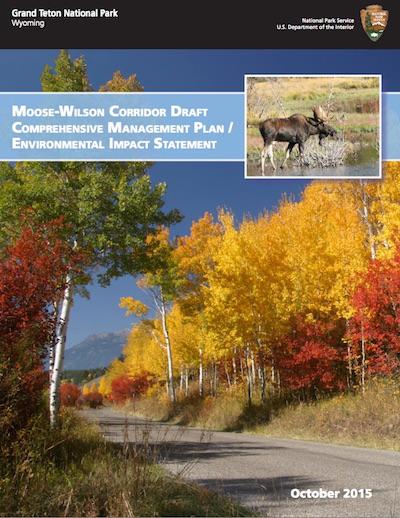
Bears, both black and grizzlies, moose, wolves and humans don't always mix well, and with that in mind Grand Teton National Park officials are proposing a management plan for the Moose-Wilson Road corridor that, if approved, would restrict traffic along the scenic corridor.
At this point the idea of restricting traffic is just that, an idea. In the concept mentioned in the draft Moose-Wilson Corridor Comprehensive Management Plan, a queuing system of some sort would be designed to limit "the number of vehicles entering the corridor at any one time during peak use periods through timed sequencing techniques. Provide queuing lanes on the north and south ends of the corridor, as needed."
Details of exactly how such a queuing operation would work have not been formulated.
The management plan, months in the works, is intended to balance public access and preservation of the corridor that runs on the north from park headquarters at Moose on south to Wilson, Wyoming.
The corridor is bounded roughly by the Teton Range to the west, the Snake River to the east, Teton Park Road to the north, and the park’s south boundary. The corridor is an outstanding representation of the park’s major natural ecological communities, all of which are within a geographical area less than 5 miles in width and 7 miles in length. The long span of American Indian presence within the corridor is reflected in the archaeological record, tribal oral histories, and the enduring cultural connections retained by tribes associated with the park. The corridor also provides many opportunities for a variety of popular visitor uses, including hiking, scenic driving, and horseback riding.
Though still just a draft, the plan's contents and approach were applauded Thursday by the National Parks Conservation Association.
“At first read, the National Park Service’s preferred action for future management of the Moose-Wilson Road corridor strikes an important balance of protecting Grand Teton National Park while supporting user access. National Parks Conservation Association commends the National Park Service for its work to date to ensure that hard science and conservation values define the next phase in management of the corridor," said Sharon Mader, the park advocacy group's Grand Teton program manager.
“In recent weeks the Moose-Wilson Road has been closed intermittently by the National Park Service due to heavy grizzly and black bear use---to reduce potential conflicts between visitors and bears. Bears are drawn to the road and surrounding area to feast on Hawthorne berry bushes and fatten up before their long winter hibernation. We are pleased to see that the Park Service’s preferred option in the plan would build on existing efforts to protect bears and people in the corridor," she added.
The plan currently is open for public review and comment through December 29. The plan can be found at this web page, and comments also may be made there.



Add comment